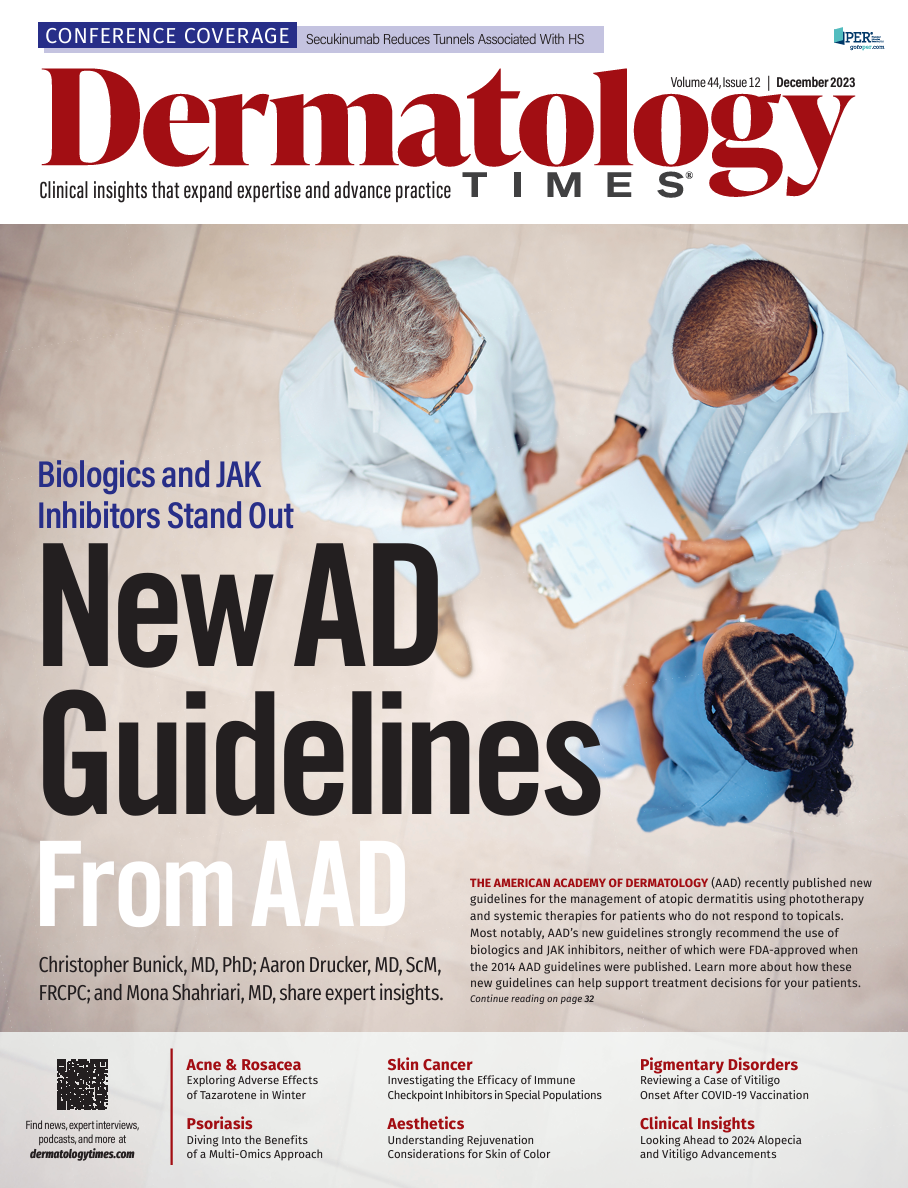- Case-Based Roundtable
- General Dermatology
- Eczema
- Chronic Hand Eczema
- Alopecia
- Aesthetics
- Vitiligo
- COVID-19
- Actinic Keratosis
- Precision Medicine and Biologics
- Rare Disease
- Wound Care
- Rosacea
- Psoriasis
- Psoriatic Arthritis
- Atopic Dermatitis
- Melasma
- NP and PA
- Skin Cancer
- Hidradenitis Suppurativa
- Drug Watch
- Pigmentary Disorders
- Acne
- Pediatric Dermatology
- Practice Management
- Prurigo Nodularis
- Buy-and-Bill
News
Article
Dermatology Times
The Journal Digest: November 20
Author(s):
This week’s collection of the latest dermatologic studies covers the relationship between melanoma pigmentation and inflammatory cytokines, the negative use of topical nystatin for tinea infections, the association between psoriasis and schizophrenia, and the association between pediatric atopic dermatitis and cardiovascular risk factors.

Melanoma Research: Correlations Between Inflammatory Cytokine Levels and Degree of Pigmentation in Acral Melanomas
Kim et al’s study examined the intricate relationship between melanoma pigmentation and inflammatory cytokines, some of the key aspects of cutaneous melanoma progression. After examining 80 patients, with 53 having acral melanoma and 27 non-acral melanoma, the authors found noteworthy correlations between pigmentation and plasma concentrations of IL-2, IL-4, IL-5, GM-CSF, IFN-γ, and TNF-α. Particularly in acral melanoma patients, these cytokines demonstrated significant associations with diminished pigmentation. The findings suggest that factors unique to acral melanoma, such as physical stress or trauma, may influence these correlations. According to the authors, this nuanced understanding opens avenues for tailored treatment strategies, especially in the context of acral melanoma.
Journal of Drugs in Dermatology: The Persistence of Nystatin Use for Dermatophyte Infections
Research from Muddasani et al’s study included a comprehensive analysis of the National Ambulatory Medical Care Survey from 2007 to 2016, which revealed concerning trends in the use of topical nystatin for tinea infections. Despite its limitations compared to other antifungals, nystatin was used in 4.3% of tinea visits, comprising 5.2% of topical antifungals. Dermatologists did not prescribe nystatin for tinea, with family medicine physicians most commonly using it at 18.3% of visits. This study highlighted a persistent, yet small, usage of nystatin for dermatophytosis, indicating a potential educational gap. According to the authors, given the ineffectiveness of nystatin, quality improvement interventions are needed to promote the use of more efficacious alternatives in tinea treatment.
Dermatologic Therapy: Risk of Schizophrenia in Patients with Psoriasis: A Systematic Review and Meta-Analysis
Zhu et al’s meta-analysis investigated the association between psoriasis and schizophrenia and revealed a significant positive link, impacting the overall population. The pooled odds ratio (OR) of 1.66 indicated a noteworthy connection, with high heterogeneity (97%). Subgroup analyses based on age and gender disclosed a stronger association in children (OR 12.90) compared to adults (OR 2.57), emphasizing age-related variations. Female patients exhibited a slightly stronger link (OR 1.74) than males (OR 1.58). These findings underscored the need for further exploration of underlying mechanisms, considering genetic, immunologic, and environmental factors, to inform targeted interventions and personalized treatment approaches for patients with comorbid schizophrenia and psoriasis.
Journal of Investigative Dermatology: Atopic Dermatitis and Cardiovascular Risk in Pediatric Patients: A Systematic Review and Meta-Analysis
Kern et al's systematic review and meta-analysis explored the association between atopic dermatitis (AD) in children and cardiovascular risk factors. Ten eligible publications have indicated a small increased risk of ischemic heart disease in children with AD. The relative risk for ischemic heart disease is 1.68, while no significant associations are found for hypertension or stroke. The analysis emphasized the need for additional research to address possible confounding factors, the impact of AD severity, and the heterogeneous definitions of AD and cardiovascular risk. The study highlighted the limited evidence on cardiovascular risk in children with AD, stressing the importance of future research for informed guidelines on cardiovascular health surveillance in this population.
What new studies are most important to you? Share with us by emailing DTEditor@mmhgroup.com.







